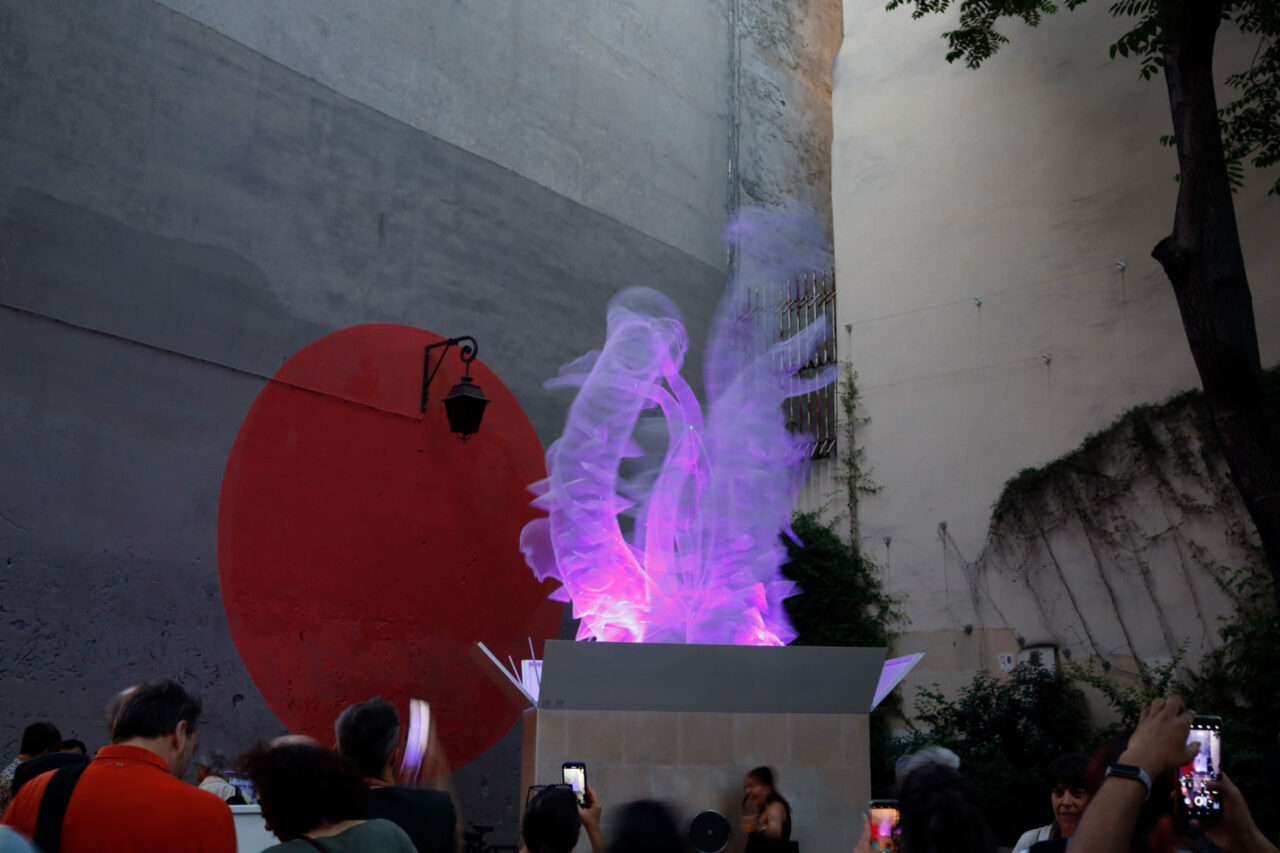On the occasion of the Nuit Blanche (White Night) 2023 in Paris, Daniela Capaccioli exhibited her latest work Boîte de Pandore, a monumental sculpture entirely made of Cavatorta wire mesh, in collaboration with the artist Nicolas Amar.
The installation space
The place of the exhibition is the Socle de Paris. A magnificent pedestal located at the intersection of two historic streets of the Ville Lumière: rue Saint-Martin and rue Cloître-Saint-Merri. More specifically, Le Socle is part of a project funded by the Paris municipality aimed at creating new urban spaces for temporary installations of contemporary art.
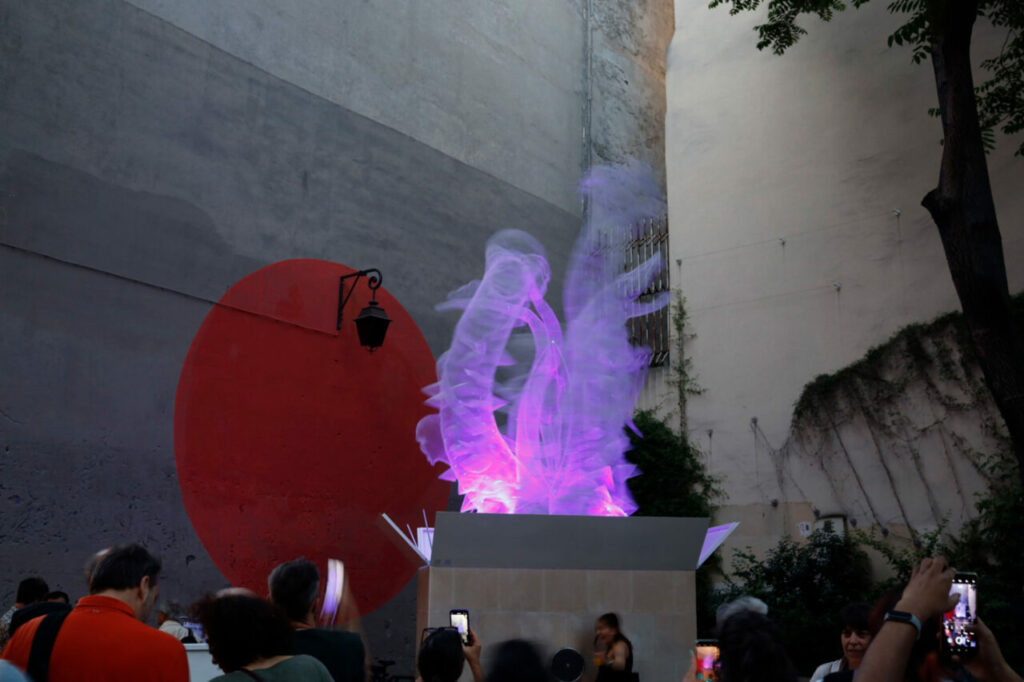
Inspiration
And for Capaccioli, Socle was the source of inspiration for her new work: observing it, she thought of transforming it into a gigantic box with surprising content. Thanks to her artistic background and deep knowledge of classical mythology, discussing with the artist Nicolas Amar, the idea of creating a modern Pandora’s Box was born. Sources of inspiration were the works of Bruegel, Bosch, Odilon Redon and the Italian cartoonist Lorenzo Mattotti.
The myth of Pandora
The protagonist of the work Boîte de Pandore is curiosity, that irresistible desire for discovery that led Pandora to open the box donated to her by Zeus.
According to Greek mythology, Zeus used Pandora to launch his revenge on Prometheus, who was guilty of stealing his fire. Zeus offered Pandora to Epimetheus, brother of Prometheus. Before the wedding Zeus gave Pandora a mysterious box but forbade her to open it. That box contained the evils of the world and Pandora, despite the prohibition, opened it throwing all the misfortunes it contained on humanity.
According to the myth, since then, the world has been plagued by old age, disease, war, famine, poverty, madness, deceit, passion, pride and hope. Immediately after opening it, Pandora tried to close the box in vain: only hope remained inside, slower to react than all the others.
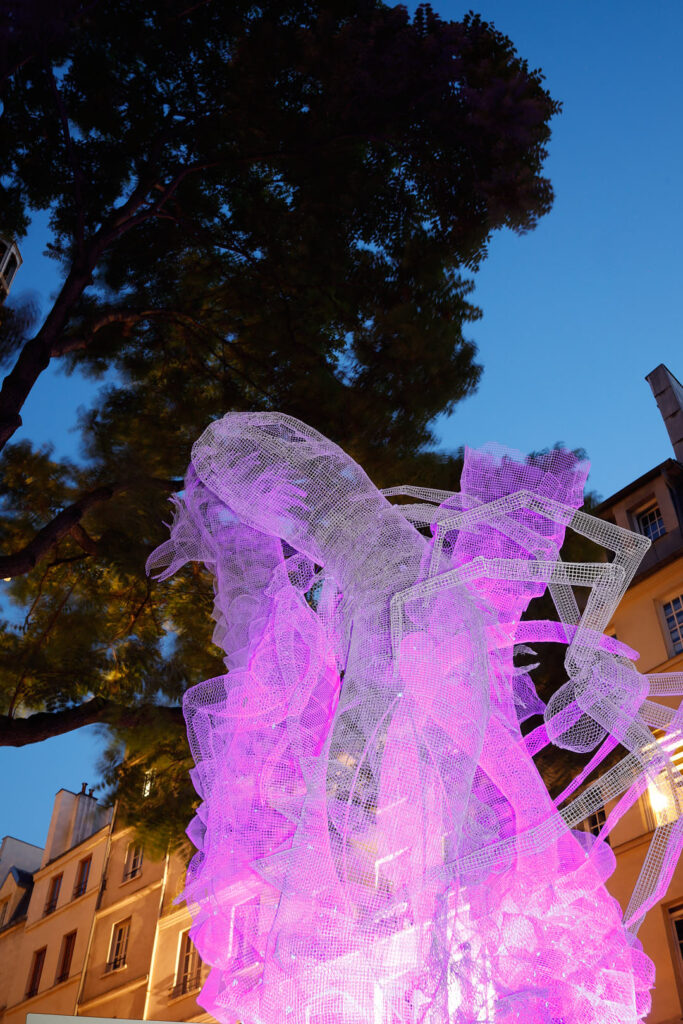
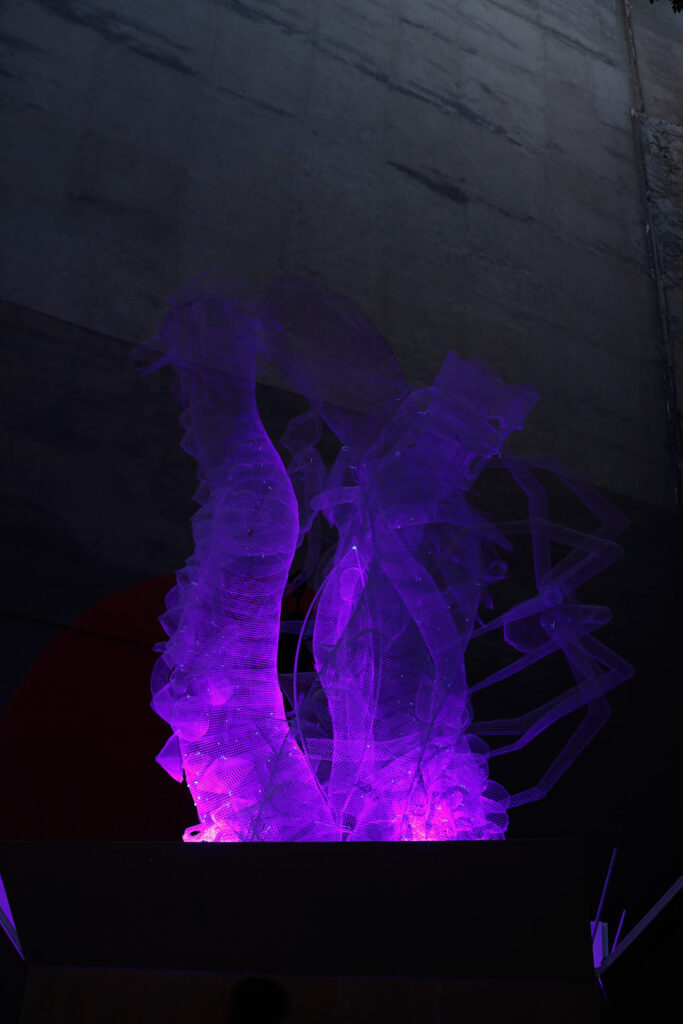
Installation
As in the myth, the box is opened thanks to curiosity. This time not of Pandora but of the spectators. Thanks to a dedicated mechanism, in fact, people can “animate” the subjects of the work. In this way the figures of the sculpture come to life with spiral movements and viewers can admire them from different angles.
The composition consists of monstrous figures, natural elements and animals that apparently have no relationship with each other. Among the subjects can be seen a man screaming, a winged snake, a harpy, a spider, an elderly woman with roots instead of legs that bind her to a child enclosed within a seed, in the centre of the sculpture.
The work does not represent in a didactic way the evils contained within Pandora’s box, but rather evokes in a symbolic way the fears that dwell in the human soul, linked to the very concept of evil. In fact, viewers, looking at the work, projects onto it their own vision of fear, evil and personal concerns.
For example, for the artist, the man who screams represents conflict, anger and rage. The harpy represents wickedness and temptation and the man who remains chained to it who remains subdued to it. The winged snake is a symbol of fear, finally, the spider symbolizes phobias. For this specific element, Capaccioli was inspired by the huge arachnids of the Parisian sculptor Louise Bourgeois, symbols of home and protection, but at the same time of a trap. The spider web, in fact, is both a means to protect your little ones and a tool to trap prey. And finally, the elderly woman, a symbol of hope, is linked to rebirth and therefore has her roots in the child protected within a seed.
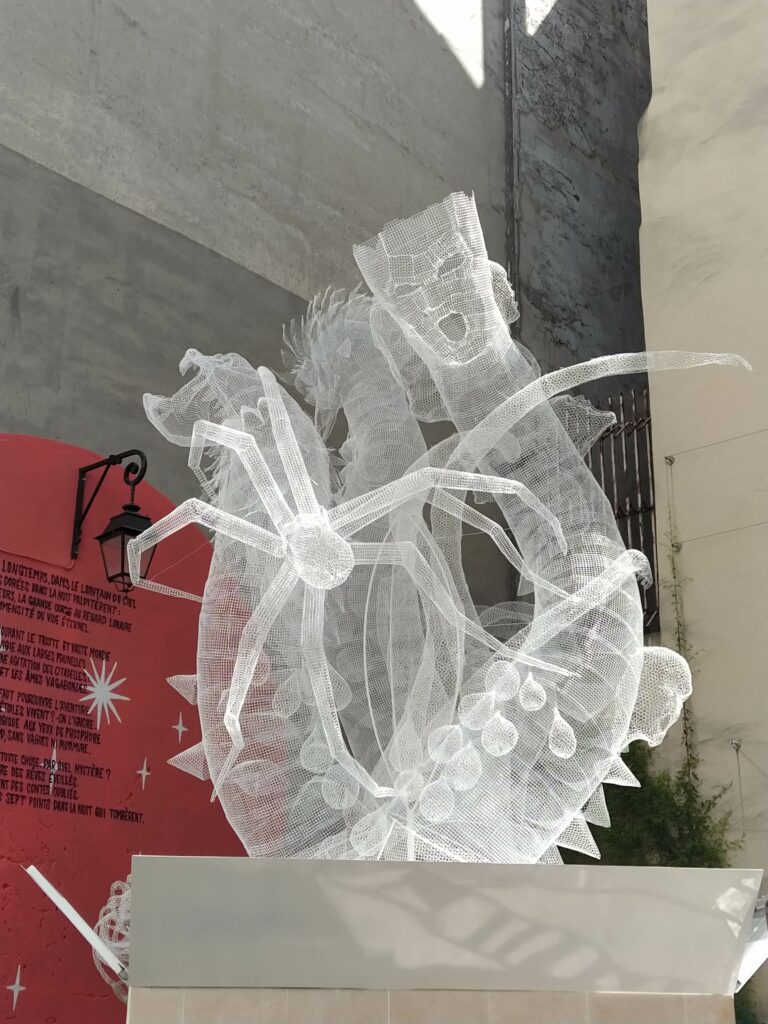
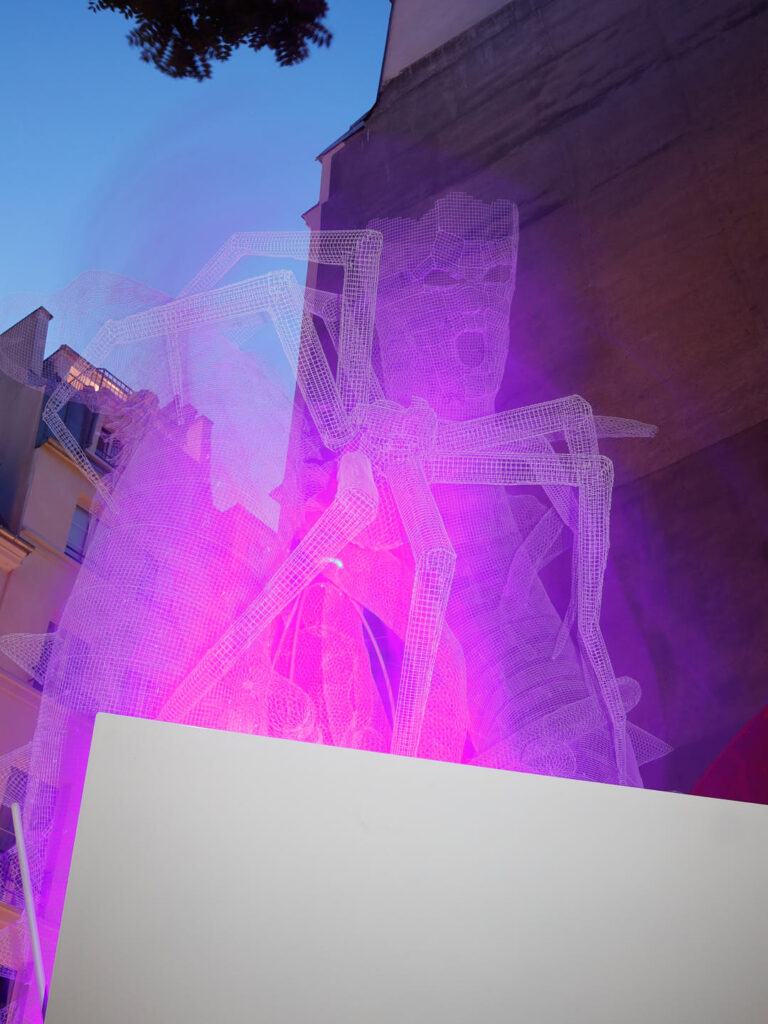
The collaboration with Nicolas Amar
Nicolas Amar is a visual artist with experience in the field of theatrical scenography and the construction of mechanical moving parts. For Boîte de Pandore he worked on the creation of the movement mechanism and the metal skeletons that support the three main figures of the work. Amar also usually works with metal and for the supporting structure of the work he created metal spirals using a square mesh Cavatorta with excellent mechanical resistance, ideal for supporting important volumes. Daniela Capaccioli, on the other hand, took care of the creation of all the figures that make up the installation. To do this, she used a hexagonal knitted Cavatorta mesh because able to give greater definition to the shapes.
Boîte de Pandore was born from a deep dialogue and a particular harmony of intent between the two artists. And this experience has left an indelible mark on Capaccioli’s career, as can be seen from her words:
“For me, this is the first time I have worked with a person and this has helped me develop a new way of working based on the synergy of different skills. Working with Nicolas Amar allowed me to bring out a part of me that I did not know and new perspectives of installations.”
The work and the Nuit Blanche
The entire work was made of white Cavatorta wire mesh. The wire mesh is one of the elective materials used by Capaccioli because it manages to define the contours of its subjects, also giving them extreme lightness. And the white colour illuminated by the purple lights placed at the base of the work gives a ghostly atmosphere to the entire installation.
The work by Capaccioli and Amar was inaugurated on the 3rd of June on the occasion of the Nuit Blanche (White Night) in Paris. An event dedicated to contemporary art during which live performances and works are exhibited in the most evocative areas of the city. During the opening night in front of Boîte de Pandore, “Connexion Céleste” was organised, a choreographic performance in costume composed of seven moments of joy aimed at countering the evils of the world represented by the work.
Boîte de Pandore remained on display until the end of September 2023 and at the end of this experience it was celebrated with a buto Japanese dance show.
Once again we are really happy to see our metal nets at the service of art and amazed at such beauty.
